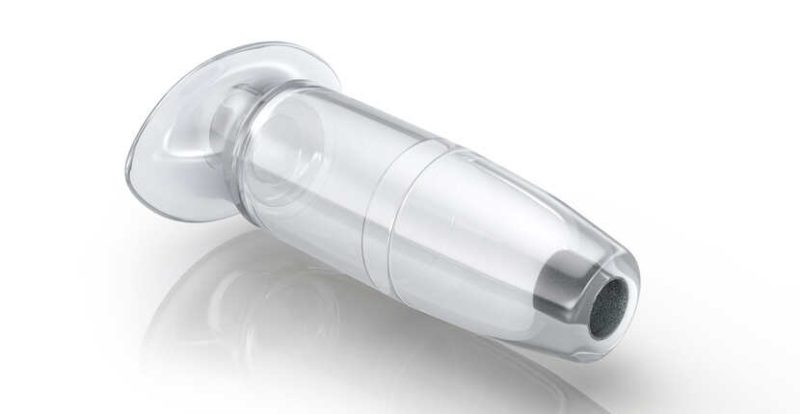The First Alternative to a Monthly Injection for Wet AMD
By Reena Mukamal for the American Academy of Ophthalmology. Jan. 04, 2022
There’s a new way to deliver sight-saving treatment for wet age-related macular degeneration (wet AMD) and it may make living with the chronic eye condition a lot easier.
People with wet AMD need eye injections of a medicine called anti-vascular endothelial growth factor (anti-VEGF) as often as once a month to prevent vision loss. Keeping up with near-monthly doctor visits can be a significant challenge for elderly adults and their caretakers.
To help patients, researchers have come up with a more convenient way to deliver the same treatment: a refillable implant that continuously delivers anti-VEGF medicine into the eye. In studies, people were able to maintain their vision with as few as two treatments per year. Called Susvimo, it’s expected to be available in early 2022. The FDA approved the implant in October.
The Burden of Monthly Eye Pokes
Wet AMD can cause rapid and severe vision loss and is a leading cause of blindness for people aged 60 and over. For more than a decade, the only treatment option has been anti-VEGF injections delivered in the ophthalmologist’s office every four to eight weeks. This regimen is difficult for aging adults to maintain. Patients often require a caregiver to accompany them to appointments, and struggle with transportation and conflicting health issues, causing them to miss treatments.
The implant offers more than convenience for patients and physicians, it provides an opportunity for more consistent treatment so people can better protect their vision from this devastating eye condition.
“If a patient is dealing with another ailment, fractures a hip, gets COVID, etc., they may not be able to come in for long stretches of time. Lapses in treatment can lead to vision-threatening disease progression,” says Joseph Nezgoda, MD, retina specialist and surgeon in West Palm Beach, Fla. “Susvimo gives people a new option with a much more manageable therapy schedule. This could change the game by easing the burden of care, freeing up valuable time for patients in their golden years and preventing devastating vision loss.”
Fewer Treatments Can Improve Adherence
Patients who have responded to at least two injections of anti-VEGF medicine may be a candidate for Susvimo. The refillable device is roughly the size of a grain of rice. An ophthalmologist specializing in diseases of the retina surgically inserts it into the eye during a one-time outpatient procedure. Patients receive a local anesthetic and a mild sedative.
Discomfort is mild and similar to that experienced during cataract surgery. Developed by Genentech, Susvimo comes pre-filled with a formulation of Genentech’s anti-VEGF medicine Lucentis (ranibizumab). The implant is not visible on the outside of the eye. It’s implanted under the eyelid, appearing, at most, as a tiny dot.
The implant is refilled in the ophthalmologist’s office every six months.
Dr. Nezgoda says the technology has the potential to transform therapy for other eye conditions with demanding treatment schedules, such as glaucoma and other retinal diseases.
Potential Risks and Complications
The Susvimo implant has been associated with a three-fold higher rate of an infection called endophthalmitis compared with monthly injections of anti-VEGF medicine. In clinical trials, 2% of patients receiving an implant experienced this severe eye infection. To put this infection rate in perspective, monthly injection of anti-VEGF medicine has an endophthalmitis rate of 0.01%.
Other possible complications include a condition called erosion. This happens when the thin, clear membrane that lines the outer surface of the eye develops a tear. Studies have shown this problem is rare.
Availability and Cost
Patients should talk to their ophthalmologist to find out if they are a good candidate for the implant. Pricing has not yet been announced. The decrease in office visits and injections are likely to represent a more economical solution for patients and their families in the long-run.

